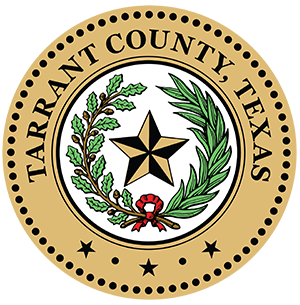
Measles
Health Advisory
Tarrant County has not reported any cases of the measles as of April 22, 2025.
About Measles
Measles is a highly contagious virus that affects your lungs and body. It spreads through the air when an infected person breathes, coughs, or sneezes. Good news – it's a preventable disease. In 2000, widespread vaccination efforts helped eliminate regular outbreaks of measles in the United States. However, today cases are now increasing. Measles is still common across the world and travelers—whether from the U.S. or visiting—can bring the virus back with them. Children and people with weakened immune systems are especially at risk for serious health problems from measles.
Signs and Symptoms
Symptoms start between 7 and 21 days after exposure, with 10-12 days being the average time. Common symptoms include:
- High fever, over 101⁰F
- Cough
- Runny nose
- Red, watery eyes (conjunctivitis)
- Red, blotchy rash that begins on the face then progresses down the body
A person infected with measles becomes contagious to others four days before the rash appears and remains contagious for four days after it begins, totaling nine days.
How It Spreads
Measles is highly contagious and spreads through the air when an infected person breathes, coughs, or sneezes. The virus can remain airborne or on surfaces for up to two hours after an infected person has left the area. One infected person can spread measles to 12–18 others who are not vaccinated.
Prevention
Anyone who is not protected against measles is at risk of infection. The most effective prevention is two doses of the measles-mumps-rubella (MMR) vaccine:
- Two doses are about 97 percent effective at prevention
- One dose is about 93 percent effective
The MMR vaccine is recommended to those 12 months or older and doses should be administered at least 28 days apart. Contact your healthcare provider if you are unsure of your vaccination status or if you have any questions about your vaccine options.
Additionally, good hygiene practices—such as frequent handwashing and disinfecting commonly touched surfaces—can help reduce the spread of viruses.
What To Do If Exposed
If you are fully vaccinated, you are considered protected and are unlikely to contract the virus.
If you have been exposed and are not immune, contact your health care providor for guidance and monitor for symptoms.
If you develop measles symptoms, immediately isolate and call your doctor. Unless it is an emergency, contact the clinic or hospital before visiting to help prevent the spread to others.
Doctor offices, clinics, and hospitals report suspect cases to Tarrant County Public Health (TCPH) at 817-321-5350, even before confirmation. Schools and childcare facilities report measles cases to TCPH if reported by the parent/guardian or from a staff member.
Downloadable Resources
Print Resources (8.5 x 11")
Measles - Know the Signs (English)
Measles - Know the Signs (Spanish)
Measles - Know the Signs (Vietnamese)


 TARRANT COUNTY, TX
TARRANT COUNTY, TX

 Epidemiology
Epidemiology